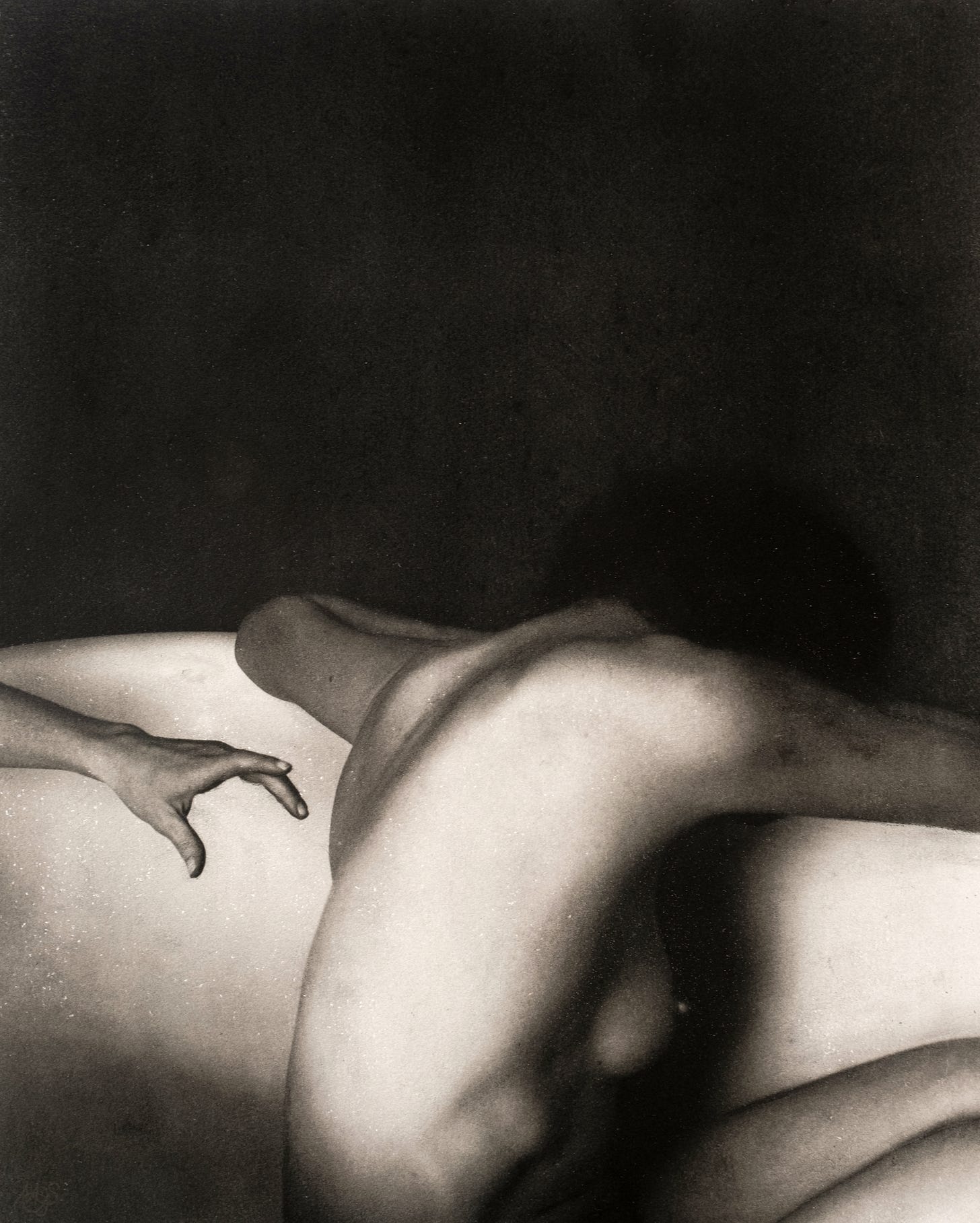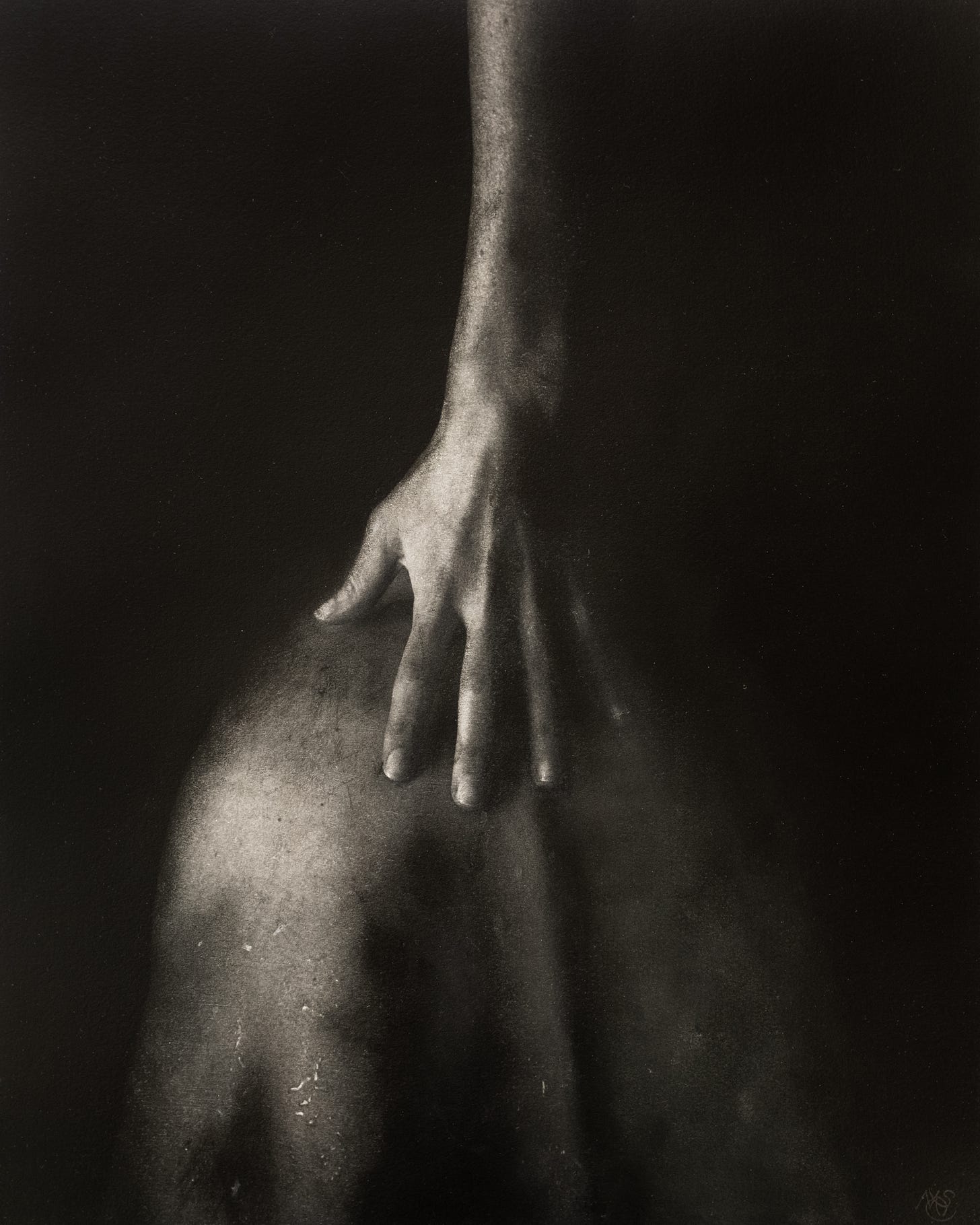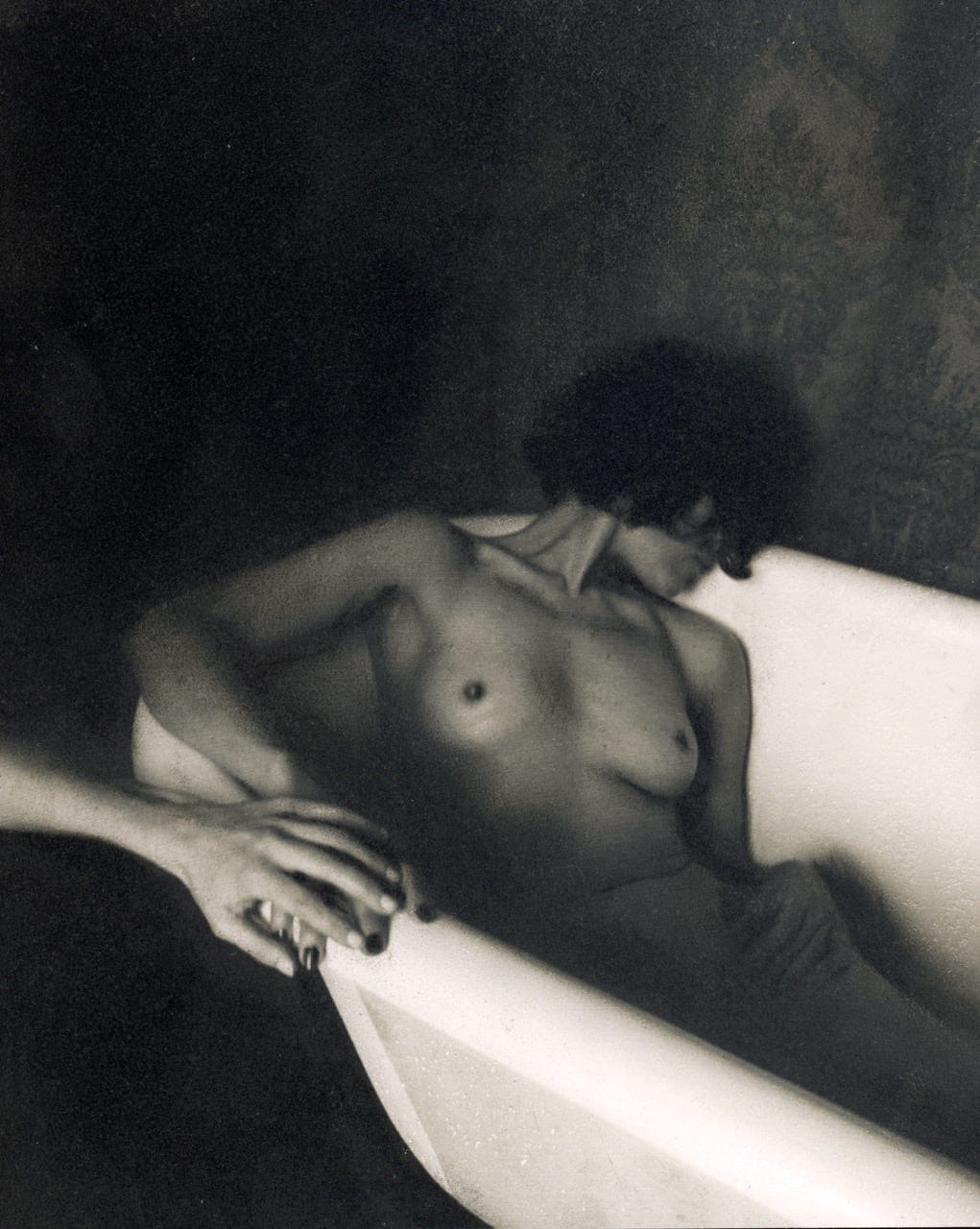“I meet you. I remember you. Who are you? You’re destroying me. You’re good for me. How could I know this city was tailor-made for love? How could I know you fit my body like a glove? I like you. How unlikely. I like you. How slow all of a sudden. How sweet. You cannot know. You’re destroying me. You’re good for me. You’re destroying me. You’re good for me. I have time. Please, devour me. Deform me to the point of ugliness. Why not you? Why not you in this city and in this night, so like other cities and other nights you can hardly tell the difference? I beg of you.”
Those words are from Marguerite Duras' 1959 film Hiroshima Mon Amour, directed by Alain Resnais.
I approached Anne Marie (the model) with a series idea centered around longing and desire. I had imagined incorporating a second figure, but only subtly: a hand, an arm, maybe even a leg—though we never quite achieved that last one. Their presence would be felt, not seen in full—never overshadowing the central model, whose existence was her own. I sent Anne Marie a few reference photographs to convey the tone, and almost instantly she responded with a mention of her love for Hiroshima Mon Amour, including the above excerpt from the film. It was perfect—elegant, desiring, lustful. It captured precisely what I had hoped to express.
Having a purposeful vision is invaluable when collaborating and building a series—it allows me to be selective and intentional during the creation process. With a clear emotional and visual direction, every photograph becomes more deliberate. I knew what I wanted to convey, but the question that remained was: how do I achieve it?
Heading into a new series with a clear vision doesn’t necessarily make things easier. In fact, it can often feel like a burden. A preconceived idea of what I want can backfire—because once I define the goal, I become obsessive in trying to achieve it perfectly. On the other hand, when I begin a series with no set direction, a path tends to reveal itself organically. There are pros and cons to both approaches. But for this particular series, having a concept in mind from the start made the process more difficult than expected.
The last series I completed wrapped in early December of 2024, with the final photographs released in early January of this year. From that December through early April, I didn’t make a single photograph. Instead, I devoted my time to exploring an ink transfer printing technique in an attempt to push my work in a more personal direction and to give my photographs a distinct, handmade feel.
For months, I experimented with different papers and transfer methods, slowly working through trial and error until I landed on a finished concept I truly loved. Rather than scanning the film negatives and treating those digital files as the final image as I have done in the past, I began transferring each photograph to paper. The result is a singular image—each one unique, like an oil painting. Because of the steps involved in this process, there is no way to replicate them. They are originals in the truest sense.
I feel as though this marks the beginning of a new creative path in my life—and for the first time in quite a while, I feel rejuvenated and excited. Of course, none of us can predict the future, but we each have a hand in shaping it.
I’d love to hear your thoughts on this process and how these artworks made you feel!












These photographs and the style which they portray is very unique to todays photography I feel like I walked back in time with a haunting reality of todays consciousness. Thank you, please keep going 💜
Stunning shots.